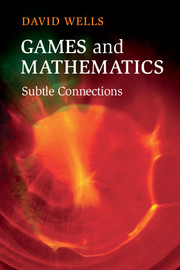Book contents
- Frontmatter
- Contents
- Acknowledgements
- Part I Mathematical Recreations and Abstract Games
- Part II Mathematics: game-like, scientific and perceptual
- 6 Game-like mathematics
- 7 Euclid and the rules of his geometrical game
- 8 New concepts and new objects
- 9 Convergent and divergent series
- 10 Mathematics becomes game-like
- 11 Mathematics as science
- 12 Numbers and sequences
- 13 Computers and mathematics
- 14 Mathematics and the sciences
- 15 Minimum paths: elegant simplicity
- 16 The foundations: perception, imagination, insight
- 17 Structure
- 18 Hidden structure, common structure
- 19 Mathematics and beauty
- 20 Origins: formality in the everyday world
- References
- Index
11 - Mathematics as science
Published online by Cambridge University Press: 05 November 2012
- Frontmatter
- Contents
- Acknowledgements
- Part I Mathematical Recreations and Abstract Games
- Part II Mathematics: game-like, scientific and perceptual
- 6 Game-like mathematics
- 7 Euclid and the rules of his geometrical game
- 8 New concepts and new objects
- 9 Convergent and divergent series
- 10 Mathematics becomes game-like
- 11 Mathematics as science
- 12 Numbers and sequences
- 13 Computers and mathematics
- 14 Mathematics and the sciences
- 15 Minimum paths: elegant simplicity
- 16 The foundations: perception, imagination, insight
- 17 Structure
- 18 Hidden structure, common structure
- 19 Mathematics and beauty
- 20 Origins: formality in the everyday world
- References
- Index
Summary
Introduction
The great Victorian scientist T. H. Huxley once made the mistake of claiming that mathematics was a deductive science modelled on Euclid in contrast to the natural sciences which were inductive, based on observation, experiment and conjecture. James Sylvester (1814–1897), an equally great mathematician, in a famous address to the British Association for the Advancement of Science in 1869, disagreed:
[Huxley] says ‘mathematical training is almost purely deductive. The mathematician starts with a few simple propositions, the proof of which is so obvious that they are called self-evident, and the rest of his work consists of subtle deductions from them’…we are told [by Huxley] that Mathematics is that study which knows nothing of observation, nothing of experiment, nothing of induction, nothing of causation.
Sylvester was appalled:
I think no statement could have been made more opposite to the undoubted facts of the case, that mathematical analysis is continually invoking the aid of new principles, new ideas and new methods, not capable of being defined by any form of words, but springing directly from the inherent powers and activity of the human mind, and from continually renewed introspection of that inner world of thought of which the phenomena are as varied and require as close attention to discern as those of the outer physical world…that it is unceasingly calling forth the faculties of observation and comparison, that one of its principal weapons is induction, that it has frequent recourse to experimental trial and verification, and that it affords boundless scope for the exercise of the highest efforts of imagination and invention.
Sylvester added that, ‘Induction and analogy are the special characteristics of modern mathematics’ [Midonik 1968 v.2: 370–1].
- Type
- Chapter
- Information
- Games and MathematicsSubtle Connections, pp. 122 - 130Publisher: Cambridge University PressPrint publication year: 2012



